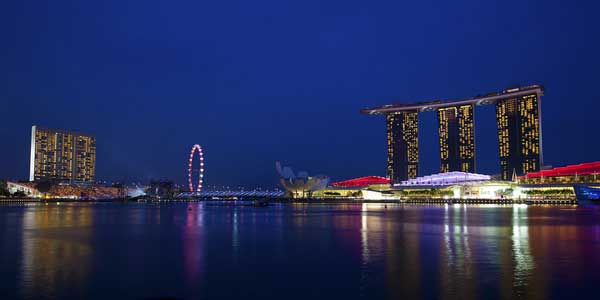If you’ve ever seen a thermal image of a city, you’d notice that the concrete jungle tends to heat up much more than areas adorned with greenery. This phenomenon is known as the urban heat island effect, a growing concern for urban populations worldwide. In this article, we delve into Singapore’s groundbreaking initiative, “Cooling Singapore,” and explore how they’re harnessing innovation and nature to combat this sweltering issue.

Understanding the Urban Heat Island Effect
The urban heat island effect is a consequence of urbanization where cities experience significantly higher temperatures compared to their surrounding areas. This thermal contrast is primarily caused by heat-absorbing materials like asphalt and concrete dominating urban landscapes. This phenomenon poses a severe risk to human health, particularly during heatwaves, which are responsible for more fatalities than other extreme weather events. Cooling Singapore is taking proactive measures to tackle this problem head-on.
Cooling Singapore’s Digital Solution
Cooling Singapore, a government-backed project, is at the forefront of devising innovative strategies to mitigate urban heat islands. One of their most promising endeavors is the creation of a digital tool aimed at assisting cities worldwide. This tool will provide data-driven insights to help urban planners and policymakers make informed decisions in their quest to combat rising temperatures.
The Role of Greenery in Urban Cooling
Vegetation plays a pivotal role in mitigating the urban heat island effect. Trees, shrubs, and green spaces provide shade, psychological comfort, and even evaporative cooling effects. Singapore, often hailed as a “Garden City,” has embraced this concept for decades, resulting in a lush urban environment that offers respite from the heat.
A Sustainable Solution
Singapore’s commitment to sustainability extends to its use of district cooling systems. These systems centralize the cooling process, distributing chilled water to various buildings, including residential towers, shopping malls, and even iconic landmarks like Marina Bay Sands. This eco-friendly approach not only reduces electricity consumption but also contributes to significant emissions savings.
A Visionary Plan for the Future
Singapore’s dedication to combating the urban heat island effect doesn’t stop with greenery and district cooling. The city-state has ambitious plans to plant one million trees and create more green spaces over the next decade. This multifaceted strategy aims to reduce the urban heat island effect and foster a deeper connection between residents and nature.
Beyond the Basics: Additional Heat-Mitigation Measures
Cooling Singapore is exploring various innovative approaches to tackle urban heat. These include shading windows, ensuring airflow, using water as a thermal buffer, and designing building facades to minimize heat absorption. Additionally, transitioning to clean energy sources and utilizing building rooftops for renewable energy production are on the agenda.
A Glimpse into the Future with Digital Urban Climate Twin
Cooling Singapore is taking a scientific approach by developing a Digital Urban Climate Twin (DUCT). This sophisticated modeling system considers numerous factors, from building geometry to local weather conditions, allowing for the simulation and testing of various urban design scenarios. The insights gained will guide Singapore’s future actions and can be applied to cities worldwide.
Conclusion
Singapore’s commitment to combating the urban heat island effect is commendable. With a combination of greenery, district cooling, and cutting-edge technology, the city is setting an example for urban planning worldwide. As it continues to follow a scientific path and harnesses its existing knowledge, Singapore is poised to become an even more comfortable and livable city, contributing to the global effort to mitigate climate change and improve our quality of life. Cooling Singapore’s innovative solutions offer hope for a cooler and greener urban future.
